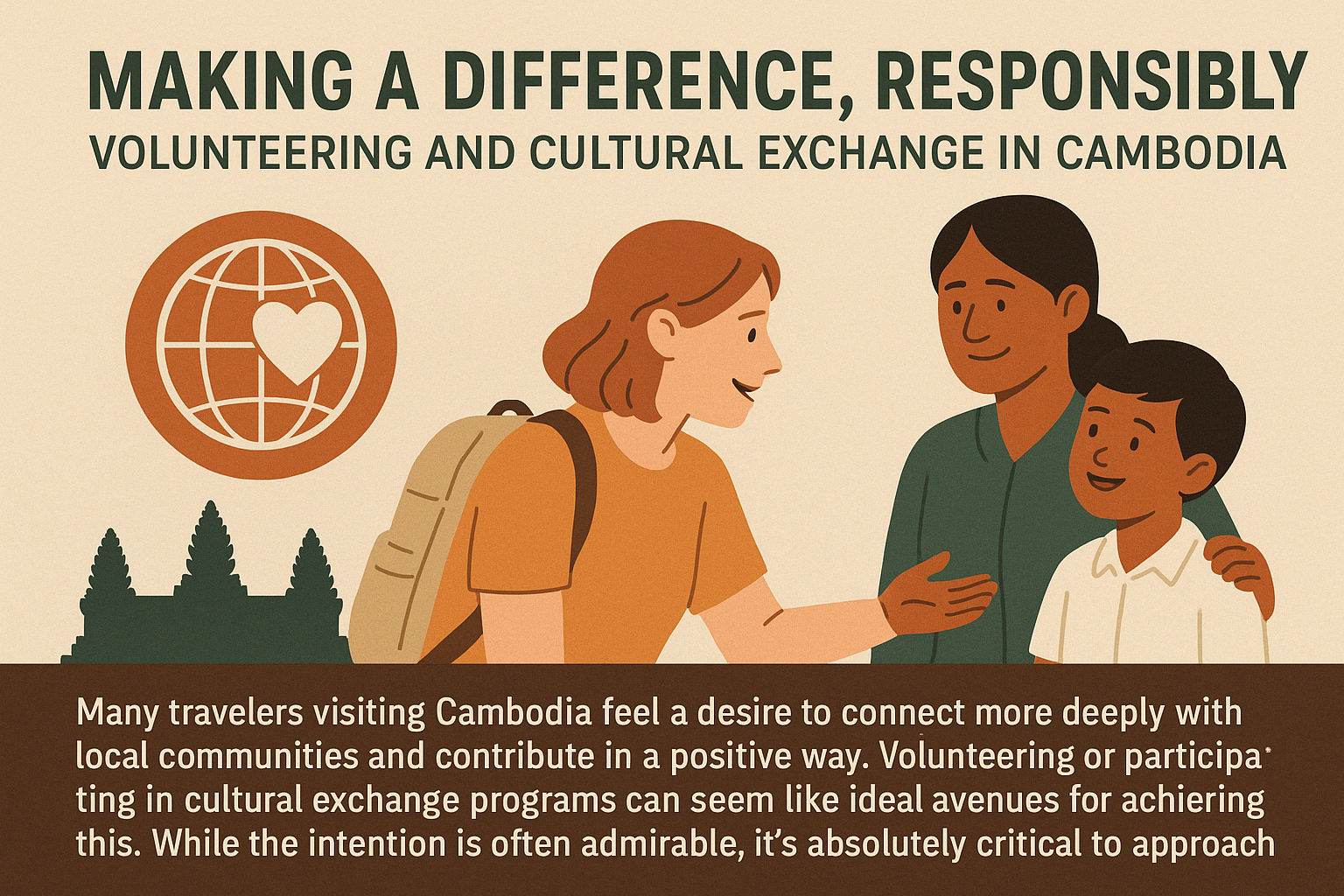Published: April 5, 2025
Beyond the ancient temples and bustling cities, Cambodia harbours vast expanses of wilderness protected within its national parks and wildlife sanctuaries. For adventurous travelers seeking to connect with nature, trekking through these diverse landscapes – from dense rainforests and rolling hills to remote jungles – offers an unforgettable experience. Increasingly, eco-tourism initiatives are providing ways to explore these areas responsibly, supporting conservation efforts and benefiting local communities while showcasing the Kingdom’s rich, yet fragile, biodiversity.
Wilderness Destinations: Where to Trek
Cambodia offers several distinct regions for trekking and nature exploration:
- The Cardamom Mountains: This vast, rugged mountain range in southwestern Cambodia encompasses some of Southeast Asia’s largest remaining tracts of rainforest. Known for its exceptional biodiversity, it offers challenging jungle treks, opportunities for kayaking or river trips, and stays in community-based ecotourism projects like the well-established one in Chi Phat. Treks here often involve navigating dense forest, crossing rivers, and exploring waterfalls.
- Mondulkiri Province: Located in the east, Mondulkiri presents a different landscape of rolling hills, pine forests (a remnant of a cooler geological past), grasslands, and impressive waterfalls like Bou Sra. It’s renowned for elephant conservation projects (like the Elephant Valley Project) offering ethical elephant encounters, and provides opportunities for treks that often combine nature walks with visits to villages of the indigenous Bunong people.
- Ratanakiri Province: Cambodia’s remote northeastern frontier, bordering Laos and Vietnam, offers rugged, off-the-beaten-path adventures. Key attractions include the stunning volcanic crater lake Yeak Laom and Virachey National Park, one of the most remote and biodiverse parks in the country (requiring special permits and expert guides for deep jungle treks). Trekking here often involves interaction with various indigenous communities and exploring pristine forests and river systems.
Guardians of Green: Importance of National Parks
Cambodia’s network of national parks and protected areas plays a critical role in safeguarding the nation’s natural heritage. These areas protect:
- Vital Habitats: Including tropical rainforests, dry deciduous forests, mangroves, wetlands, and mountain ecosystems.
- Globally Significant Biodiversity: Providing refuge for a wide array of species, many of which are endangered or threatened globally.
- Ecosystem Services: Protecting watersheds that supply water for agriculture and communities, sequestering carbon, and maintaining ecological balance. Effective management and protection of these parks are crucial for long-term environmental health and sustainable development.
Jungle Encounters: Wildlife Spotting Opportunities
While Cambodia’s jungles teem with life, wildlife spotting requires patience, luck, and often, the keen eyes of experienced guides. Sightings are never guaranteed, but potential encounters include:
- Primates: The haunting calls of gibbons (several species exist) often echo through the forest canopy. Macaques (pig-tailed, long-tailed) and langurs (silvered, Germain’s) are more commonly seen.
- Mammals: Sambar deer, muntjac (barking deer), and wild pigs are relatively common. While Asian elephants inhabit areas like Mondulkiri and the Cardamoms, sightings in the wild on standard treks are rare (sanctuaries offer better viewing opportunities). Elusive predators like clouded leopards and sun bears exist but are exceptionally difficult to spot.
- Birds: Cambodia offers fantastic birdwatching opportunities with hundreds of species, including hornbills, eagles, pittas, broadbills, woodpeckers, and numerous colourful forest birds.
- Reptiles and Amphibians: A diverse array of snakes, lizards (including monitor lizards), turtles, and frogs inhabit the parks.
Local Knowledge: The Crucial Role of Indigenous and Local Guides
Trekking in Cambodia’s national parks, especially in remote or dense jungle areas, should always be undertaken with qualified local guides. Their role is indispensable:
- Navigation and Safety: Guiding trekkers safely through often unmarked or challenging terrain, understanding weather patterns, and identifying potential hazards.
- Ecological Interpretation: Identifying plants (medicinal, edible, poisonous), animal tracks, and explaining the complex forest ecosystem.
- Wildlife Spotting: Their trained eyes and ears are far better at detecting elusive wildlife than the average visitor.
- Cultural Bridge: Facilitating respectful interactions with local villagers or indigenous communities encountered along the way, sharing cultural insights and context. Many successful eco-tourism projects prioritize training and employing guides from local communities, ensuring benefits stay local and traditional knowledge is valued.
Sustainable Steps: Eco-Tourism Supporting People and Forests
Eco-tourism, when practiced responsibly, offers a powerful model for sustainable development in and around protected areas. Its core principles involve:
- Minimizing negative environmental and social impacts.
- Providing direct financial benefits for conservation.
- Generating income and empowerment for local communities.
- Offering educational and enriching experiences for visitors.
Well-managed eco-tourism projects (like community-based lodges, guided treks, wildlife watching tours) can create strong incentives for local people to protect forests and wildlife, offering viable alternatives to livelihoods based on logging, poaching, or unsustainable agriculture. Fees paid by tourists can help fund park management and community development initiatives.
Shadows in the Forest: Deforestation and Logging Challenges
Despite conservation efforts and the potential of eco-tourism, Cambodia’s national parks face persistent threats:
- Illegal Logging: Valuable timber continues to be illegally harvested within protected areas, often driven by powerful interests.
- Encroachment: Land clearing for agriculture or plantations sometimes pushes into park boundaries, fragmenting habitats.
- Poaching: Snares and hunting pose significant threats to wildlife, including endangered species.
- Infrastructure: Proposed roads or hydropower dams can disrupt ecosystems and open up previously inaccessible areas to exploitation.
These challenges highlight the ongoing struggle to balance development pressures with environmental protection and underscore the importance of supporting legitimate conservation and sustainable tourism initiatives.
Conclusion
Cambodia’s national parks offer incredible opportunities for adventure, discovery, and connection with nature. Trekking through the Cardamom rainforests, the hills of Mondulkiri, or the remote jungles of Ratanakiri provides a vastly different perspective on the Kingdom beyond its ancient temples. By choosing responsible eco-tourism operators, engaging local guides, and traveling with respect for the environment and local cultures, visitors can not only have an enriching experience but also contribute positively to the conservation of Cambodia’s precious biodiversity and the well-being of the communities who act as its guardians.


